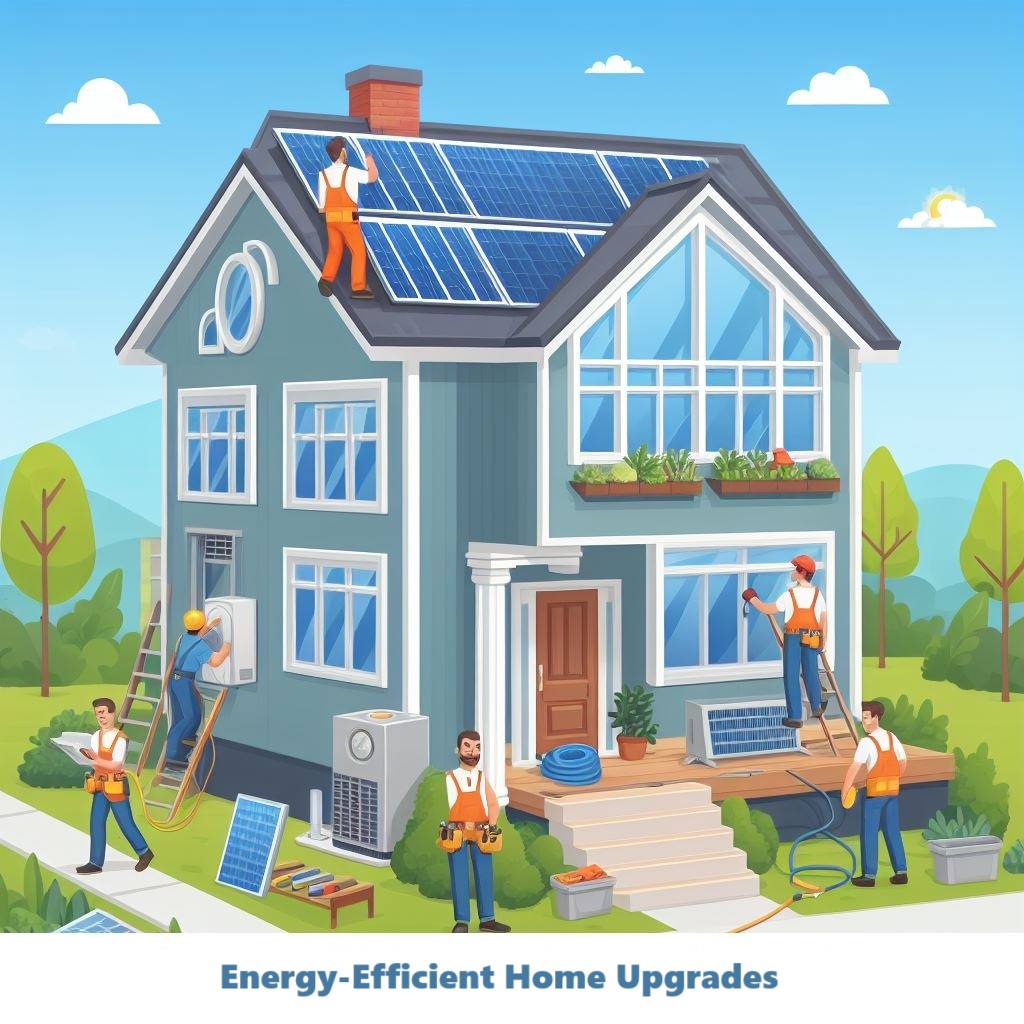
Creating an energy-efficient home is more than a trend—it’s a responsible decision both for the environment and for reducing your monthly energy bills. As green technology advances, homeowners have an increasing number of options to make their homes more sustainable. Here are practical upgrades that can transform your living space into a green haven:-
Sealing Drafts: The Low Hanging Fruit
Before diving into high-tech solutions, let’s look at the low hanging fruit. Drafts from doors and windows not only make a home feel chilly but also lead to higher energy bills as your heating system works overtime to compensate for the heat loss. Fortunately, there are effective ways to combat this issue that doesn’t cost much at all. Simple weather stripping and caulking around windows and doors and the effective use of curtains and blinds can prevent energy from leaking out of your home.
Insulation: The Unsung Hero
Proper insulation keeps your home warm in the winter and cool in the summer, reducing the need for heating or cooling. Upgrades can include spray foam, fiberglass, or eco-friendly options like sheep’s wool or recycled fabrics. Attics, wall cavities and floors are the places to look at here.
Solar Power: Harness the Sun
Solar panels are the flagship of green technology. By converting sunlight into electricity, they can significantly cut your power bills and reduce reliance on fossil fuels. Modern solar panels are more efficient and aesthetically pleasing than ever before, with options for integration into roofing tiles. Plus, with potential grants and vat exemptions, solar power is a no brainer. Keep an eye out also for community solar and community grid projects that may offer an opportunity for communities to produce and consume their own electricity or sell it to others.
Smart Thermostats: The Brain for Your Home’s Energy
Smart thermostats learn your habits and adjust heating and cooling for optimal performance. They can be controlled remotely via smartphones, allowing you to turn off systems when no one is home. This simple change can lead to substantial savings on your energy bills.
Energy-Efficient Appliances: Modernise for Savings
When it’s time to replace old appliances, choose energy-efficient models. Look for the Energy Star label when selecting refrigerators, dishwashers, washers, and dryers. These appliances use advanced technology to minimise electricity and water consumption.
LED Lighting: A Bright Idea
LED lights use at least 75% less energy and last 25 times longer than traditional incandescent bulbs. Swapping out your old bulbs can make a noticeable difference in your energy usage. Consider smart lighting systems that you can control for intensity and timing, further maximizing energy savings.
Low-Flow Fixtures: Water Wisdom
Installing low-flow toilets, showerheads, and taps can dramatically reduce your water usage. Modern low-flow fixtures are designed to provide a satisfying flow while conserving water, so you won’t have to sacrifice comfort for sustainability.
Cool Roofs and Green Roofs: Innovations Overhead
A cool roof is designed to reflect more sunlight and absorb less heat than a standard roof, while a green roof, which is partially or completely covered with vegetation, provides insulation, reduces runoff, and helps to cool the surrounding air. Both options are innovative ways to improve your home’s energy efficiency.
Insulating Windows: Clarity and Efficiency
Upgrading to double or triple-glazed windows provides better insulation, keeping your home warm in winter and cool in summer. They can also reduce noise pollution. Look for windows with low-emissivity (low-E) glass, which has a thin metallic coating to reflect infrared energy (heat) while allowing light to pass through. Secondary glazing is also an excellent solution and one which I can personally attest to.
Electrification: The Future of Home Energy
As the grid becomes greener, electrifying your home heating systems can be worth thinking about. Consider replacing oil or gas fired heaters with electric options, especially those that can work with smart home systems to optimize their usage based on your needs and the cheapest energy rates.
Conclusion
Making your home energy-efficient is a process that not only contributes to a healthier planet but also to your personal comfort and financial health. Whether you start small with draft excluders and LED lighting or go big with solar panels and high-performance insulation, every step towards energy efficiency is a positive one. With the green revolution in full swing, there’s no better time to embrace these technologies and modifications for an eco-friendlier home.
By investing in energy-efficient home upgrades, you’re not only setting the stage for a sustainable future but also enjoying immediate benefits through reduced energy costs and increased property value. It’s a win-win for you and the environment.
I hope this helps some of you who are planning to make your home more energy efficient in the near future. Don’t forget that you can get a number of quotes from insulation contractors, solar installers, heating contractors, electricians and many different types of tradesmen who can help you make your home more energy efficient on our website at www.tradesmen.ie/trades.
If you have any comments or suggestions please feel free to place them in the comments box below.
Cheers
Oliver Dempsey
Tradesmen.ie
7 November 2023
General Tips for hiring a tradesman
Here are some tips to consider when hiring a tradesman:-
1. Ask for phone numbers of references so that you can check them out
2. Check insurance of the tradesman where insurance is required
3. Hire a suitably qualified architect, building surveyor or building engineer if the job is anything to do with a new build, building renovation or extension






